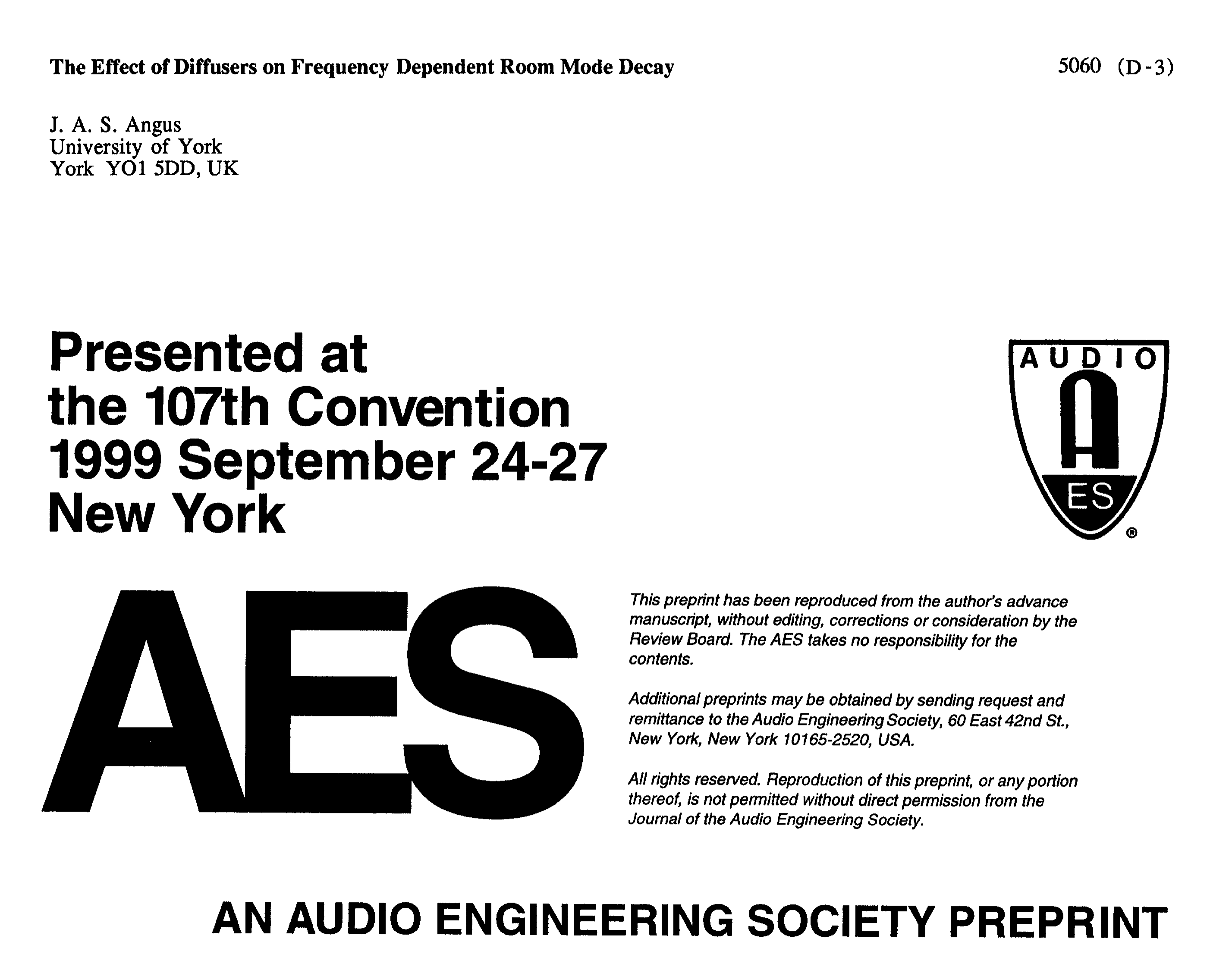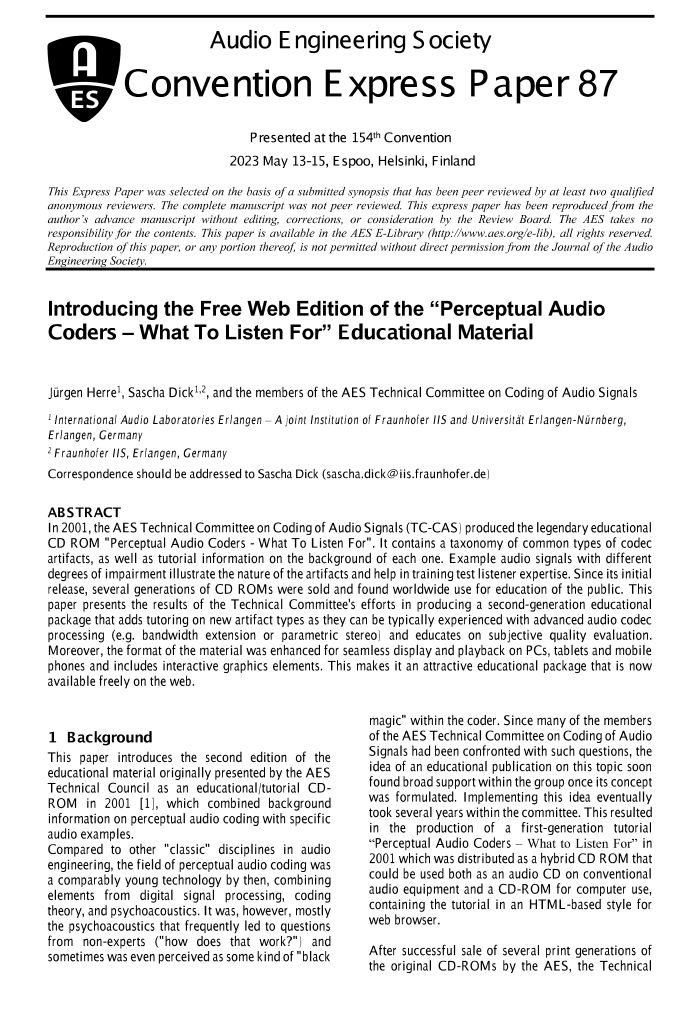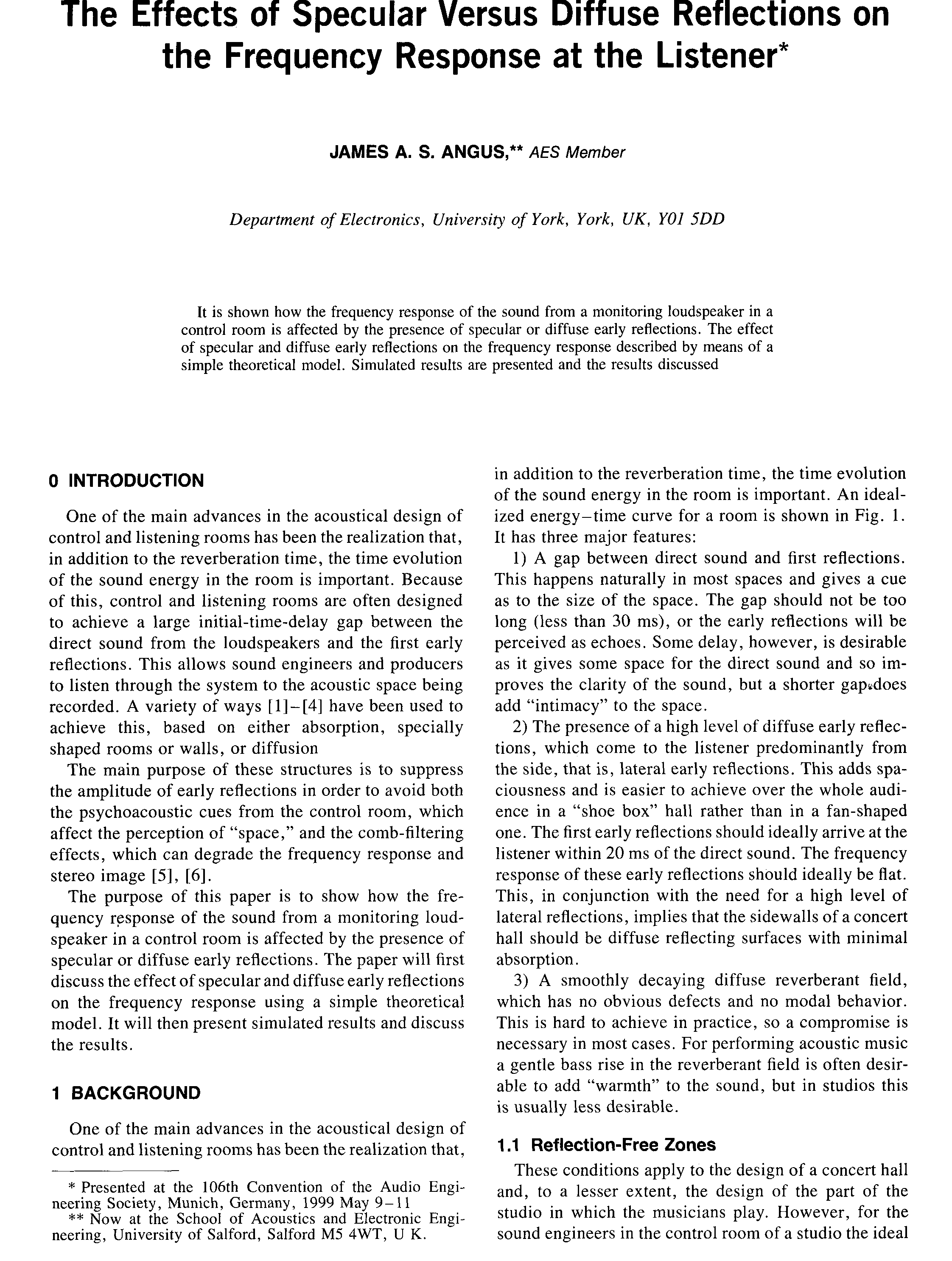The paper is on the AES site. The authors tested using an electromagnetic model in MATLAB which is why they show frequencies in the MHz range.
The AES Forum is where our members get to interact with each other in between conferences and section meetings.

secure.aes.org
Diffuse Versus Non-Diffuse Energy and the Effect of Acoustic Diffusors
This paper discusses the effect of diffusers on the diffuse and nondiffuse sound energy in a room. The paper first defines diffuse versus nondiffuse energy, then presents a simple means of measuring it. It also discusses the effect of diffusers on the diffuse energy using a simple theoretical model. The paper presents simulations on an electromagnetic scale model of a reverberant room which show the beneficial effect of diffusers on diffuse versus nondiffuse energy ratio.
Authors: Angus, James A.; Clegg, J.; Marvin, A. C.; Dawson, J. F.
Affiliation: University of York, York, United Kingdom
AES Convention: 100 (May 1996) Paper Number: 4250
Publication Date: May 1, 1996
Subject: Architectural Acoustics and Sound Reinforcement



